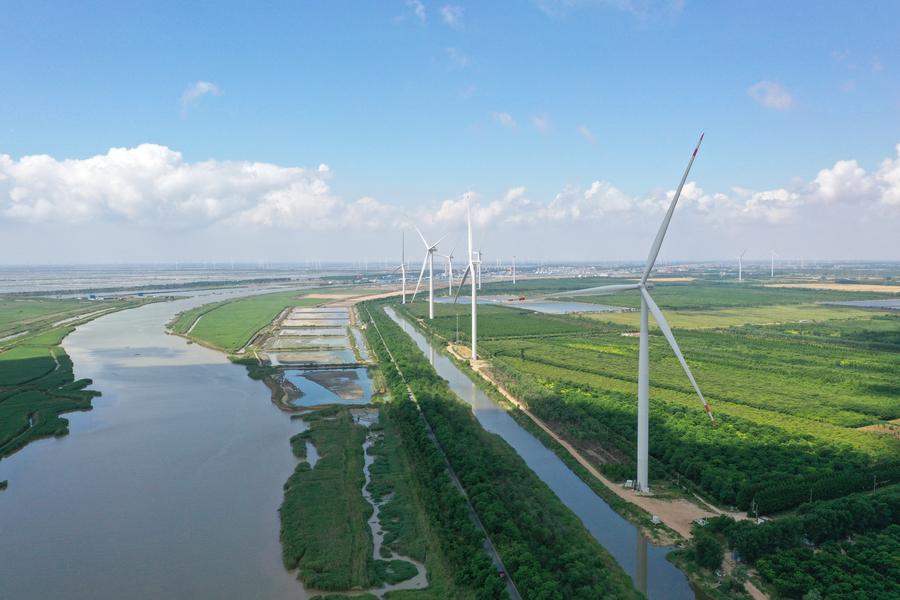
China's green energy development has become an engine for the global energy transition, which has substantially eased global inflation pressures while addressing climate change, according to a white paper issued on Thursday.
China is responsible for over 40 percent of the annual additions to global renewable energy capacity since 2013. The newly installed capacity in China last year accounted for more than half of the world's total, according to the white paper titled "China's Energy Transition", which was issued by the State Council Information Office.
From 2014 to 2023, the share of nonfossil fuels in global energy consumption rose from 13.6 percent to 18.5 percent, with China accounting for 45.2 percent of the increase. Today, China is collaborating with more than 100 countries and regions on green energy projects, the white paper noted.
READ MORE: White paper: China world's largest investor in energy transition
Zhang Jianhua, head of China's National Energy Administration, said during the release of the white paper in Beijing that "as a strong advocate of global energy transition, China will continue working with other members of the international community to plan energy cooperation together, address global climate change and create a clean world for all".
The International Energy Agency has recognized China as a front-runner in the global renewable energy sector and a major driving force behind the world's rapid expansion of renewable energy capacity.
Analysts said that China has been stepping up efforts to promote the reform of its energy production and consumption methods while upgrading its energy supply capacity.
"Buoyed by supportive policies, competitive advancements in the domestic supply chain and a reliable grid system, China is on track to accelerate energy transition with continuous renewable energy projects in place," said Deng Simeng, a senior analyst for renewables and power research at global consultancy Rystad Energy.
According to the consultancy, over half of the additions to renewable capacity this year will come from China. By the end of July, China had installed 1,206 gigawatts of wind and solar power capacity, exceeding the 1,200 GW national target set for 2030, meaning that China has accomplished the target six years ahead of schedule.
A report from the International Renewable Energy Agency said that global wind power projects have seen the average power generation cost per kilowatt-hour decrease more than 60 percent over the past decade, while solar power projects have seen a cost decrease of more than 80 percent. The reductions are largely attributable to China's green energy shift, the report said.
Wang Lining, director of the oil market department of the Economics and Technology Research Institute of China National Petroleum Corp, said that China's further opening-up has created new opportunities for deeper international cooperation on clean energy.
Multinationals, including General Electric, BP and Siemens, are steadily expanding their investment in China's energy sector, with many foreign projects well underway across the country, he said.
According to the white paper, China has become the world's largest investor in energy transition, with the country's investment in the transition reaching $676 billion in 2023.
ALSO READ: Full text: China's Energy Transition
Wan Jinsong, deputy head of the National Energy Administration, said that China's exports of photovoltaic and wind power products helped other countries reduce carbon dioxide emissions by about 810 million metric tons in 2023.
"The country's electricity generated from clean energy has catered to more than half of the increase in total electricity consumption over the past decade, marking a growing share of green energy in its energy mix," he said.
According to the white paper, the country's installed capacity of clean energy reached 1,700 GW last year, or 58.2 percent of the country's total installed power generation capacity. Clean energy accounted for 26.4 percent of the country's total energy use in 2023, up from 15.5 percent in 2013, while the share of coal in its energy consumption dropped 12.1 percentage points during the past decade.
Zhang, the NEA head, said the government will continuously step up efforts to deepen energy reforms by establishing and improving mechanisms for green and low-carbon development.



